


“More than just a great printer, PRP is our trusted partner.”











“More than just a great printer, PRP is our trusted partner.”







French Hospital Medical Center, a Dignity Health Central Coast hospital, proudly welcomes Bishop’s Peak Women’s Health Center and San Luis Obispo Women’s Health Center to our family.
These centers offer the following obstetrics and gynecology services:
• Routine and high-risk pregnancy care
• Genetic testing and counseling


• Education for all women’s health needs
• Cancer diagnoses and management
•
Urinary tract disorder treatment
• Menopause management

• Infertility diagnoses and treatment
• General and specialized gynecological care

Most insurances accepted. Please call to schedule an appointment.
Bishop’s Peak Women’s Health Center: 805.786.4111
San Luis Obispo Women’s Health Center: 805.544.8811
To find a doctor in the French Hospital Medical Center Network, please visit www.FrenchMedicalCenter.org/Find_A_Doctor.
Bishop's Peak Women's Health Center
35 Casa Street, Suite 220 San Luis Obispo, CA 93405
San Luis Obispo Women's Health Center
100 Casa Street, Suite B San Luis Obispo, CA 93405





Still fresh from his election to the SLO City Council, we spend some time getting to know Dan Rivoire.
Sam Pal, a sixteen-year-old junior at SLO High, shares his love for storytelling and sense of wanderlust.
With success in mind, consultant Jim Rizzi discusses the draw of distraction and importance of staying focused on your strengths.
Known for its small town charm, Jeanette Trompeter takes a trip south to explore Old Town Orcutt.

Self-described Americana Bearded Outlaw Country Flannel Folk, the Turkey Buzzards share their sound with the Central Coast.
An eco-friendly focus guided the construction of this three-level triplex perched near the corner of Garden and Pismo Streets downtown.
We share the year-to-date statistics of home sales for the city and county of San Luis Obispo.
It’s a story within a story when a transplant photographer casts a spotlight on Central Coast businesses.
Peak at our holiday shopping guide and get an insider’s view of our favorite local picks.
Take an in-depth look at San Luis Obispo’s housing crisis and examine the looming decisions that will shape its neighborhoods over the next twenty years.
There’s no doubt that the Central Coast wine region draws a crowd for good reason, but there’s a new crop of tasting popping up and it’s being led by brew masters.

With resolutions in mind, we take a serious look at what exactly is going to make those goals stick.
Chef Jessie Rivas finds the perfect balance between comfort food and healthy, seasonal fare.
Check out our feature event in the article Choose Happy! then flip to the calendar. Brimming with holiday cheer, these Central Coast events are sure to get you in the spirit for a bright and merry season.
We’ve heard time and time again about the importance of funding for the arts. Bettina Swigger shines a light on the difficulties and realities of bringing art to life.
the merchants of Court Street & Downtown Centre Victoria’s Secret • Urban Outfitters • Moondoggies Cal Poly downtown and more
a season of merriment and fine retail
Every once in a while I catch a whiff of something that takes me back. It’s amazing, the power of a scent. It happened to me the other day when the aroma of fresh tamales combined with a vintage car smell—it’s difficult to say exactly what that is, maybe some axel grease, a little mildew, perhaps a bit of exhaust—that immediately transported me to 1983.
I was around nine years old at the time, and by then had already driven hundreds of miles around my grandfather’s ranch outside of Visalia in the San Joaquin Valley. The dirt roads framing his cotton fields doubled as my slow motion Indianapolis 500. I constantly circled, topping out at a speed at which his two Alaskan Malamutes could run. That old faded orange Jeep Wagoneer—one of seven or eight rehabilitated vehicles designated as “shop trucks” to be driven by the “hired men”—was, by far, my favorite. I looked for any excuse to take it for a spin, and my grandmother always had important assignments. Picking up the mail took a while since the mailbox was at least a mile away, and going to visit Aunt Melba was probably twice that far.

One day I pulled up to the shop where I found Grandpa overhauling a tractor. He was frustrated, and hungry. “What do you say we go to town and get ourselves some Spanish?” For some odd reason, “Spanish” to him was a literal translation for “Mexican food.” I shared his affinity for Spanish and was happy to tag along for a rare trip off the ranch with him. “Okay, you drive,” he said plainly. The blood left my face and a pit formed in my stomach. I was absolutely terrified. Sure I could handle the country roads in my sleep, but “going to town” was an entirely different matter. Since Grandpa pulled himself across the vinyl bench seat to the passenger side without the slightest hesitation, I figured that I should not be worried either. It was when the last dirt road morphed into asphalt that I started to panic. He then turned to me and said, “Come on, kid, get this thing going!”
The speedometer’s thin black arm swept passed 20 miles per hour for the first time in my young driving career. Then 30, then 40, then 50—practically supersonic as far as I was concerned. Like a mirage in the desert, I was finally able to make out the sign for Estrada’s as I struggled to peer through the steering wheel and over the dashboard. Going out to lunch with Grandpa was a very big deal and I savored every moment, nearly as much as I did each bite. After he got himself all caught up on the latest news about our waiter’s family—his wife and kids were doing great—he ordered some tamales to go. Grandma would be happy that we brought home some dinner he explained to me with a wink. As I drove us back down the familiar country roads toward my grandparents’ house, which I could now see poking through the walnut orchard, I imagined myself as a victorious Roman general returning from battle. With the foil-wrapped tamales vibrating softly on the seat between us, I figured that I had just conquered the world. Recently, I had my nine-year-old son along with me to run some errands on a lazy Sunday afternoon. We were sitting outside the car wash waiting for my old ‘78 Mercedes to be towel dried when a woman approached us. “Homemade tamales?” She extended her hand to reveal the goods, which had been neatly packaged in aluminum foil, “Six for 10 dollars.” I gave my son a wink and I explained that Mom would be happy we showed up with dinner. As we headed toward home I was overpowered by a memory, which then gave me an idea for a detour. As I pulled to a stop near the edge of a half-empty parking lot at Cal Poly, my son shot me a confused look. “Alright, Donovan,” I said. “You’re driving.” I then scooted myself over to the passenger seat, offered a few helpful tips and fixed a confident expression. “Really, Dad, are you sure about this?” Sliding the driver’s seat all the way forward he listened intently to my instructions, carefully shifting the lever to “D” and releasing the brake. He then made a figure eight—his confidence growing with each lap—as the aroma of fresh tamales filled the air.
I would like to take this opportunity to say “thank you” to everyone who had a hand in producing this issue of SLO LIFE Magazine and, most of all, to our advertisers and subscribers—we couldn’t do it without you. And, to you and your family, my best wishes for a happy holiday season and a healthy and prosperous 2015.
Live the SLO Life!
Tom Franciskovich tom@slolifemagazine.com

4251 S. HIGUERA STREET, SUITE 800, SAN LUIS OBISPO, CALIFORNIA SLOLIFEMAGAZINE.COM info@slolifemagazine.com (805) 543-8600 • (805) 456-1677 fax PUBLISHER


Tom Franciskovich
Have some comments or feedback about something you’ve read here? Or, do you have something on your mind that you think everyone should know about? Submit your story ideas, events, recipes and announcements by visiting us online at slolifemagazine.com and click “Share Your Story” or email us at info@slolifemagazine.com. Be sure to include your full name and city for verification purposes. Contributions chosen for publication may be edited for clarity and space limitations.

If you would like to advertise, please contact Tom Franciskovich by phone at (805) 543-8600 or by email at tom@slolifemagazine.com or visit us online at slolifemagazine.com/advertise and we will send you a complete media kit with loads of testimonials from happy advertisers.
Ready to live the SLO Life all year long? It’s quick and easy! Just log on to slolifemagazine.com/subscribe. It’s just $24.95 for the year. And don’t forget to set your friends and family up with a subscription, too. It’s the gift that keeps on giving!
The opinions expressed within these pages do not necessarily reflect those of SLO LIFE Magazine. No part of this publication may be reproduced in whole or in part without the expressed written permission of the publisher. CIRCULATION,
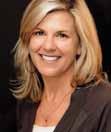


Elder Placements guides you through the difficult decision making process.

After our evaluation, we take you to tour the appropriate facility that will give your parent the care and quality of life they deserve.
Whether it’s Assisted Living, Alzheimer Dementia Care or Independent Living, we do the legwork for you at NO COST.


Thank you for your article
THE LAST WORD about the college kids living in our neighborhoods. One of my neighbors made copies of the letter and delivered it taped to a box of donuts to the five noisy college houses on our street. And it worked! We haven’t heard a peep since. ”
— JENNIFER RUCKSI can relate to THE LAST WORD article. We love living in a college town and appreciate all of the benefits it brings (an educated populace, a youthful vibrance, theatre, arts and cultural events a town our size might not normally experience). That said, I feel like we are living in a situation that shouldn’t exist. Our neighborhood hosts a meet and greet EVERY September. We bring fresh baked cookies, shake hands and exchange phone numbers.
I’m just wondering why, neighborhood by neighborhood, we are living among more and more college students every year and fewer young families. The “starter” homes are no more as rental prices are increased because they can be when you put two students to a room.
I think Cal Poly president Jeffrey Armstrong said it best, “Our own data shows that our persistence rates are higher if students live on campus for both their freshman and sophomore years.” So Jeffrey, why aren’t they living on campus? And when are they going to?
I know I’m probably over my word count, but I hope you publish this –because Armstrong and Poly need to do this thing! Make it happen. Build some on-campus housing. No more excuses. What are they waiting for? SLO to turn into Isla Vista? (Isn’t that why we don’t live there?) Or is it time to cash in our chips and move?


Hoping to stay in SLO, — LYNN ROSSITER
Thank you to Tom Franciskovich for the entertaining NETI POT story in the last edition. It’s nice to know that we can still make our kids laugh and the people that run this wonderful magazine are just as real as this beautiful place we live. Stay humble and never stop making your kids laugh. Thanks for the much needed “LOL” to get me through the rest of this week!











Born and raised in the Five Cities area, Luke Tyree recalls a happy childhood on the Central Coast. However, for a while— ten years to be exact—he lost his way. Tyree finally began to turn the tide on his struggle with addiction six years ago when he was “given a chance to start over.” At first, it was through little things, like hiking and running. During the solitude of those treks through the local hillsides he started to notice the beautiful simplicity of nature. It all began with occasionally stopping to take a shot with his cell phone, but the photos were not doing the landscape justice, so he upgraded to a legitimate digital single lens reflex (DSLR) camera and set out to learn the craft.
As he dove deeper into his new hobby, Tyree’s life continued to change course. He enrolled at Allen Hancock College in Santa Maria and was able to transfer into Cal Poly where he can be found today studying Psychology. As a component of his curriculum he has learned about peak performance, sometimes referred to as “flow,” which he now recognizes as part of his experience in photography. “The world almost turns off for a few minutes— sometimes hours—and everything goes into slow-mo when I am shooting a beautiful landscape. I just lose myself in it,” explains Tyree, who is planning to attend
graduate school for an advanced degree in Counseling Psychology and hopes to help others who are struggling with addiction.
The photograph you see here was taken almost two years ago with his entry level DSLR, a Canon T3i (he has since moved on to a Canon 6D after the T3i was victimized by a rogue wave during a shoot in Montaña de Oro). The plan had been to go to work in San Luis Obispo and end the day with a session shooting Bishop Peak. Tyree had set up his camera on a tripod when a helicopter appeared overhead and began circling the iconic hillside. Taking an “educated guess” at the proper settings for the effect he was trying to capture, he went for a 60-second exposure. Considering the light, he figured he would have three tries, and on the third one, he captured this shot. The circular, UFO-like pattern came from the helicopter’s lights as it flew into and out of the frame over the course of a minute. The illuminated area on the right shoulder of Bishop Peak results from its spotlight, and the starburst seen on the left shoulder was the result of the ambulance floodlight, which was there in an effort to rescue a young hiker who had been injured during a fall on the mountain after dark. SLO LIFE


Robert and Judy McCarthy, a Bakersfield couple, finally removed the fencing they had built illegally on the property they purchased atop Ontario Ridge. The popular trail that runs between Pismo Beach and Pirate’s Cove just south of Avila had been sealed off from the public by the couple. Amid a groundswell of complaints from local hikers, the Coastal Commission ordered the McCarthys to remove the fencing or face $11,500 per day in penalties.
Breaking the hearts of Central Coast music lovers, developer Hamish Marshall announced that he scaled way back on his plans for SLO Brew’s move to the 700 block of Higuera Street. This summer, the relocated facility, now in its 26th year, will feature just one floor, not three, combining a brewery, restaurant, and music. Moving SLO Brew will allow Marshall to begin the Garden Street Terraces development, a 93,425-square-foot commercial, residential, and hotel project.
Following a heated exchange, SLO City Council failed to secure the 4-1 vote that would have approved an update to the General Plan allowing for greater housing development. In the weeks following, local activist Kevin P. Rice announced that he will be organizing a referendum if the update eventually passes as expected. Concurrently, Cal Poly announced that its own Master Plan will also undergo an update. [For more on this issue, turn to “Gettin’ LUCE” on page 60.]
A new study was made public showing that the San Luis Obispo County prison population had grown by 50% since 2011 when the bill known as AB 109 was passed. The law, which aims to reduce state prison overcrowding, transfers lower level offenders into county jails. According to the study, 30% of the local prisoners are now AB 109ers. Violence at the county jail has increased, officials claim, as the criminal sophistication of its inmates has spiked alongside the growth in population.




Friends of the Earth, an environmental advocacy group, filed a lawsuit claiming that PG&E and the Nuclear Regulatory Commission (NRC) had secretly and illegally revised the license for Diablo Canyon to conceal the facility’s vulnerability to earthquakes. The suit, which made national news, follows the revelation that Michael Peck— an NRC inspector formerly housed at Diablo Canyon— reiterated his recommendation that the plant be shut down until it could be deemed safe at all potential earthquake levels.

A lawsuit was filed by Dee Torres-Hill—the wife of County Supervisor Adam Hill—against her former employer, Community Action Partnership of San Luis Obispo (CAPSLO). In the suit she alleged wrongful termination, defamation, libel, and infliction of emotional stress. The filing followed an unsuccessful suit she brought last year against Michael Brennler, the former mayor of Atascadero and current private investigator, who she claimed had defamed her while he was looking into her activities at CAPSLO.


In an election that featured record low turnout, Lynn Compton unseated Caren Ray for the 4th District Board of Supervisors seat; Dan Rivoire [see “Q&A” on the next page] won a place on SLO’s City Council; write-in candidate Jim Hill ousted longtime mayor Tony Ferrara in Arroyo Grande; Shelly Higginbotham appears to have been reelected as mayor of Pismo Beach by two votes (although not certified as of this writing). And, Measures D (San Luis Coastal Unified bond), L (Cuesta College bond), and G (SLO’s half-cent sales tax extension) all passed handily.

A video from the security camera at the Flip Flop Shop in downtown SLO went viral after a 23-year-old female employee, alone in the store, was sucker punched by 20-year-old Justin Edmond Pard. The suspect had arrived in town from Arizona less than 24-hours prior to the random attack and was arrested again a few hours after the incident for a disruption at another business. The violent scene brought the ongoing issues of homelessness and mental health back to the forefront.
Former Apple CFO, Peter Oppenheimer and his wife, Mary Beth, both horse lovers and Cal Poly graduates, pledged $20 million to the university. The funds will be used to build a new agricultural events center that will feature a 70,000 square-foot arena capable of seating 2,500 people. The donation will also finance an equestrian pavilion comprised of two 60,000 square-foot arenas. Additionally, a new farm store will be built and other agricultural facilities will be upgraded.

Despite spending more than $2 million over two years in remediation measures at the Oceano State Vehicular Recreation Area, such as the installation of wind fences and hay bales, unhealthy levels of air pollution on the Nipomo Mesa remains unchanged. Frustration boiled over concerning the lack of progress at the Air Pollution Control District meeting, which prompted board member and San Luis Obispo Mayor, Jan Marx, to urge, “If this is an emergency, let’s act like it’s an emergency.”

Before we even had a chance to get to know the 29-year-old Executive Director of the SLO County Bicycle Coalition, DAN RIVOIRE stormed onto the political scene with a decisive win in the November election. As he begins his term as San Luis Obispo’s newest city councilmember we spend the afternoon philosophizing about hockey, bike safety, and women’s rights.
Tell us about yourself, Dan. I was born in the City of Chicago and was raised in the western suburbs in a little town called Glen Ellyn. It was a great time to grow up there. The schools were excellent and it was a great community. I was engaged really early on in all sorts of random activities. I played lots of sports—hockey since I was a tiny, little kid—I still do. Now it’s roller hockey and ice hockey in Atascadero at the little rink there. In high school I did gymnastics and wrestling. I did some other school activities like public speaking and science competitions, too. Some friends and I founded a club called the Young Independents, mostly to poke fun at the Young Republicans and Young Democrats. We didn’t take ourselves very seriously. But, it was great to bring discourse to the importance of evaluating each candidate, and what they actually stood for, as opposed to supporting whatever dogma you appreciated. That was fun and my first little toe dip into the government side of things.


So, how did you end up here on the Central Coast?
I was way into science at the time, particularly chemistry. Me and a close buddy of mine from Chicago were both accepted at Cal Poly, so we came out to school here in 2003. San Luis Obispo was a little bit of a surprise for us because we knew California through the movies. It turned out to be a more conservative, down-to-earth town than we had expected, which worked well for both of us Midwestern kids. Although I started as a Chemistry major, I ended up graduating with a degree in Philosophy and minors in Religious Studies and Women’s Studies—the first male student to do so. Afterward, I found a position through Americorps doing volunteer infrastructure building at the Bike Coalition. That job transitioned over a year-anda-half when I was offered the executive director position there. It was huge to take on such a big a role in the area of bicycle advocacy, especially at 23 years old. I’m still the director there now and I love every day of my work there.
Speaking of love, tell us about your wife. I met my wife, Megan, day one in the dorms. We were just getting settled in when we met this goofball from Boulder who came banging on our door to say, “Hi,” as she was running around trying to get to know everybody in our hall. Our R.A. was involved in Student Community Services, a department on campus that facilitates volunteer opportunities for students. Many of us
in that dorm ended up doing a lot of volunteering together; Make a Difference Day, lots of events on campus. I coordinated a free speech hour at something we called Soup and Substance, which was a public discourse event. Megan and I didn’t start dating for about six or seven months, but we were together for ten years before we got married, which was two years ago now. She’s amazing, a lot of people probably voted for me because of her.
Okay, that leads to our next question. Why run? Well, there is a large percentage of the city that is young, something like 56% are between 18 and 44 years old. So we have a lot of folks in the community who are young professionals, young families. And, while I do believe that our own current council can get outside their own shoes and relate to different age groups; they’re not dealing with what it means to actually be a young professional in San Luis Obispo right now, or a parent here now, and the costs associated with that, and the challenges that go with that. I’m living it right now and my wife and I know very clearly what “lack of affordable housing” means because we are experiencing it ourselves. Beyond that, I hope to inspire other young leaders in the community to recognize that being involved in city government is do-able, and that it can be a part of our lives. Plus it’s a great way to give back and influence the decisions of many issues that will very much affect particularly this age group.
Speaking of issues, is it true that you want everyone to ride a bike? Yes, definitely! And that is why building bicycle infrastructure is so important. The city has heard repeatedly from constituents that this is something that residents want. They want to be able to get their kids to school by bike, for example. And the city has said, “You know, you’re right. Let’s make that a major city goal.” I’m not saying that I am going to come in and force that to happen right away. What I am saying is that I would like to see the city focus on a smaller set of goals such as this and delivering on it. I think we can make major strides in this area and I’ve been struggling with the pace at which this has been happening. I think there are a lot of people who need or want to be able to move around to a greater degree by bike, and there are those who are otherwise concerned by the overall level of traffic congestion. These are things that we can solve.




Growing up in Southern California while maintaining strong family ties to San Luis Obispo, LESLEY SANTOS DIERKS dreamed of one day running a museum. While she did start out fundraising for museums, she eventually found herself on a career path that led her to a stint in the Silicon Valley during the dot com boom where she had a front row seat to the evolution of corporate governance and philanthropy. This experience has given her a unique perspective on the state of our market economy today. Now, she is the Executive Director of Spokes, a nonprofit consultancy that helps other nonprofits operate successfully. She took the reigns of the organization shortly before it had a near-death experience of its own just a couple of years ago when it was known as the Nonprofit Support Center. Here is her story…
We like to take it from the top, Lesley. Where are you from? I grew up in Orange County, and then we moved to San Diego just before my sixth grade year. I went to high school there, and then college at USC; I’m a die-hard Trojan. My dad was born and raised here in San Luis. He grew up in the same house where my grandmother eventually passed away. My mother moved here when she was just four years old because her father, my grandfather, was a large animal vet and was teaching animal husbandry at Cal Poly. My mother and father met sometime in their senior year at San Luis High School. They went to the prom and never left each other’s side. Afterward, they headed down to L.A. for school. Mom went to UCLA and dad went to Cal State Long Beach. They were married their senior year in college and had my brother and me. I was born in Laguna. My dad was a civil engineer by training but was a land developer of master-planned communities and, as you know, Orange County at that time was all about development. I will say my dad was an exceptional land developer in the sense that he was always very environmentally conscious; he was one of the unusual ones.
were
I went to a private parochial school and played soccer; rode my bike all over the place. It was nothing to ride around after school and not see my mom until the streetlights came on. We lived in a
planned community that my dad had created, so the world was my oyster. I had these huge caterpillar eyebrows that I still tease my mother about. My dream was to become the director of a museum. I love museums and I thought that public apathy was killing them, so I had it in my head that I was going to change the public’s perception about that and get more government funding for them. So I got a degree in art history and a degree in public relations, and I was going to go to graduate school later on around a curator program or something. I worked for a public relations firm and I had done some internships at different museums when I was in college and learned that the money [government funding] was never coming back. So, if I really wanted to lead a museum I had to learn how to fundraise. At that time the California Museum of Science & Industry, which is in Exposition Park right across from USC, was starting a capital campaign to become the California Science Center and so I applied and got a job there.
You know, my dad, he was the son of parents who didn’t even get their high school diplomas. I think my grandfather got his GED eventually, and he never left San Luis Obispo until he went to college. But my dad had a wanderlust growing up, and he would take our family on trips as often as he could. When we went on trips he loved museums too, so that’s just what we would do and
I think that’s probably what started my passion. It’s amazing to walk into a room and see something that has existed for 3,000 years, for example. And it’s just phenomenal to me that all of these generations have recognized the value in this one item and have protected it over all these years. Seeing the exhibits and thinking about the history is almost a religious experience. I don’t know if I can explain why exactly, but I do think so much of it is tied to the memory of my dad. I love them and they are kind of the keeper of all of our treasures. I enjoy history and I enjoy seeing that history come to life—it’s tangible, it’s not just reading about something, it’s actually experiencing it.
And, so the museums led to a career in nonprofits?

Yes, museums definitely gave me a start with my nonprofit career. But, in order for my career path to make sense, I should probably back up and fill in the blanks. I’m embarrassed to admit this, but at some point during those years I was in a bar in Manhattan Beach. I’m not real proud of it, but it was great bar, Harry O’s; I don’t know if it’s still there. My favorite band was going to be playing there that night, so we were there early and a guy walks in wearing a Cal Poly hat. I’m thinking to myself, “Who’s this guy from San Luis?” So, we strike up a conservation. I told him about all of the time I had spent driving up to see my grandparents there, and how people wore their
cowboy boots, and so many of the roads weren’t paved. You know, San Luis now is very different than it was when I was growing up visiting here. So we struck up a conversation, and four months later we’re engaged.
Must have been one heck of a conversation! Yeah, I know. [laughter] Well, it turned out to be quite a lesson. We’re no longer married, but we ended up with two beautiful daughters and still do have a great relationship and work well together as co-parents; so, it was all worth it. Anyway, we moved to the Bay Area where we were part of the Silicon Valley rush. I was doing fundraising for a small, private business college and decided I really didn’t enjoy that. I’ve always been active as a volunteer and so, a co-volunteer of mine, a friend with whom I volunteered, said, “You know, they’re looking to hire someone to run my company’s philanthropy programs. Would you be interested?” I said, “Hmm, I don’t know. We’ll see.” I hesitated because I kind of felt like going over to a for-profit corporation was kind of selling out a little bit. But I was curious and decided to check it out, and I really connected with the woman whom I interviewed, and I came away really excited about it. I ended up getting hired to do that work, which was corporate philanthropy for Adobe Systems.
Isn’t that like joining the Dark Side of the Force in your world? Yes, in many ways, yes. But, it was a fabulous company and the original founders are tremendous personal philanthropist in-and-of themselves, and so they built a corporate culture around philanthropy. This was really an up-hill climb because Wall Street doesn’t want to hear you say, “We’re giving profits away to nonprofits.” It’s a hard thing to justify. But for the founders, John [Warnock] and Charles [Geschke] it was not even a question. John would say, “There’s no discussion about it; that’s just what is going to happen.” They were really ahead of the curve in this way, but you are starting to see it more now. I really do think things are changing. You’re starting to see the emergence of the for-benefit model, and companies like Toms Shoes. They were really early in this development and the IRS is still trying to figure out how to treat them for taxation purposes and doesn’t know what they are going to do. I feel like we have been on this spectrum, and the pendulum swung way over on capitalism and materialism. I think we have kind of had our fill and it has been swinging back the other way now, and I think we are getting much closer to the center.
Do you see this as a generational thing? They talk about generational differences and the Millennials. Their world is so different than it was for me growing up. What I love about them is they have a real sense of optimism about, “We can make things better. We need to make things better.” At least that’s their intent; it’s not necessarily about making money, so I think there are going to be some new corporate structures coming into play. We know full well that consumers are willing to take more purchase risk when a corporation has a brand that is associated with being a good corporate citizen. We actually see those results in their numbers, so I am hopeful. In the meantime, we still need more and more nonprofits because government resources are getting smaller and, frankly, they are not as efficient at delivering services as we are. Nonprofits are pretty remarkable in how they can make soup out of stones.
And speaking of stones, I’ve heard it said that you “can throw a rock on the Central Coast and hit a nonprofit.” Is it true that we’re the “Nonprofit Capital of the World?”
It’s a bit of a myth, but, yes, we do have a lot of them. And I will say that in our local community most of our nonprofits are very small. We are unique in that way, definitely $500,000 or less, and an operating budget probably close to $250,000; often with no staff or with one to three staff, and so we have a large group of nonprofits that struggle. When founders do bring on staff, we find that they are often reluctant to relinquish responsibilities so that they can do the bigger strategic planning, and that can create a real struggle. This phenomenon is so common that there is actually a name for it: “Founders Syndrome,” >>

I feel like we have been on this spectrum, and the pendulum swung way over on capitalism and materialism. I think we have kind of had our fill and it has been swinging back the other way now, and I think we are getting much closer to the center.
which comes into play often with the people who created the program in the first place. A nonprofit, by design, should not rely heavily on just one person because there is supposed to be a system of checks and balances; that’s why there are term limits and built-in turnover for board members. What’s expected of them doesn’t always get applied and so you have to have a vision; you have to have processes in place that look beyond any one individual. These are the sorts of things that we deal with at Spokes, and they are the hardest part. We can train anyone

and rejuvenate. I had some setbacks with my pregnancies, actually I had a couple of miscarriages. It was a very difficult time and it really changed my perspective. I wanted to be near family and to have a support system nearby. So, we decided to move here and were able to telecommute to our jobs in the Bay Area. We did that for a little while. And then we learned that my father had cancer, and we lost him, which was really difficult because he was my anchor in a lot of ways. So now I had two little girls, and was relatively new to motherhood, and I wanted to focus on being a mom—so I quit my job. It was a very turbulent time. But I’ve found that if I don’t work, I’m going to find all these volunteer projects and other things that are almost like work, which is kind of what I did. I signed up for Leadership SLO and learned from one of my classmates about a job opening locally at the Nonprofit Support Center [NSC]. I was hired a month later. And a year after that, the economy tanked and we ran into the perfect storm; and they decided to close their doors. Greg Hind was a major donor to the NSC and was essentially the guy who paid my salary. He had been a friend and a mentor to me, an ally and a very special person. I had to go share the news with him that we were going to be shutting down and he said, “So, what are you going to do to fix it?” I gave him a couple of ideas and he said, “Okay, go write a business plan.” So I did, and I came back to present it to him and he funded it. As part of the process we redefined our mission and changed our name to Spokes.
We’ve talked a lot about your career. What happens when you’re not working? We love to travel. I have some good friends who like to meet in Avila, which is such a
beautiful beach to spend the evening after all of the tourists are gone. The kids don’t care, they are playing in the water in their wetsuits. I love to just sit on the beach and watch them, and watch the sunset. I love to spend the day like that. We are so busy just running between kids’ activities, but I still make time for books. I’m an avid reader. I especially love short stories. I think they’re fascinating. It’s such a skill to be able to create a story and engage a reader in 30 pages. I also love the fact that, you know, life is messy. So, I don’t really buy into the movies and
on tactics—the mechanics of running an organization—but it’s that leadership piece that’s most challenging, and we continue to work on it. You do it through coaching, and you do it through peer modeling and that sort of thing, but it is the hardest part of the job.
Let’s get back to you—how is it that you landed here in SLO? Both of our parents had homes in San Luis Obispo and we would always come here for the weekends to visit with them
books where everything gets tied up with a bow at the end. With short stories, you can’t really bring everything to a conclusion, and it always leaves you wondering. I often find myself, when I read a really good short story, thinking about those characters.
I wonder what happened, or what’s going to happen to them a month from now. Or, what would I have done in that situation?
I appreciate that about my work, too—the truth is we are all dealing with adversity, and we’ve all got something we are struggling with.
...the truth is we are all dealing with adversity, and we’ve all got something we are struggling with.
At French Hospital Medical Center, we’re proud to introduce San Luis Obispo County to its first cardiac electrophysiology program. Now our team of expert cardiologists has the technology to diagnose and treat heart rhythm disorders locally. It’s big-city medicine delivered with small-town kindness. dignityhealth.org/EP


With his love of stories, you wouldn’t want to get between SAM PAL and his books. This sixteen-year-old San Luis Obispo High School junior, who has drawn inpiration from a his older sister, Ria, is a local student to watch.

What sort of extra-curricular activities are you involved in?
I’m most involved in Mock Trial and the Latin Club, both at SLO High. I’m also part of the National Honor Society, Hope Club, and Math Club.
What is going on with you now?
I’m starting to look at colleges, which is equal parts thrilling and anxietyinducing. I’m also gearing up for a fiercely competitive mock trial season. SLO High is in it to win it this year!
What is important to you outside of high school?
My family and friends hold an extremely esteemed place in my life, of course. But other than that, books have a prominent place in my life. Anyone can glean an almost infinite amount of knowledge from a book, just by reading and rereading, and gaining a deeper understanding of what a text means, whether it’s a novel or a textbook.
What do you want people to know about you?
I love to collect stories. I love hearing about other peoples’ experiences; and I try to make those stories meaningful for me, whether it’s by writing about them, or telling others about the interesting people I have met.
If you won $1 million what would you do with it?
I think I would use it to secure education for myself and my family, and use the remainder to fund mental health services in schools. Education is incredibly important because it inspires new ideas and can lead you to accomplish amazing feats in your field. Mental health is really important because I see myself and others struggling with the immense pressure high school brings, and the schools don’t always have enough resources to help where they want to.
If you could go back in history and meet anyone, who would it be and why? I would want to meet Richard Feynman. I’ve read both his autobiography and two biographies about him, and he’s absolutely fascinating. He was a deeply intelligent man who had unique experiences, from performing in samba bands to working at Los Alamos.
What schools are you considering for college?
I’m looking at a lot of schools on the East Coast, sort of to satisfy my wanderlust, but I’m also looking at a few in the Midwest, and the UC’s. And of course, I’m considering Cal Poly.
SLO LIFE
Know a student ON THE RISE ? Introduce us at slolifemagazine.com/share





To begin our coaching program, I asked Rick to complete a DISC Behavioral Assessment. I frequently use assessments in my coaching practice and find them to be very insightful. This particular assessment measures the respondent’s “observable behavior” in four areas:
1) How you respond to problems and challenges;
2) How you interact with people;
3) How you respond to change, and the pace of your environment;
4) How you respond to rules and procedures.
The DISC Behavioral Assessment is one of several I use in my practice. Coaching can often be intuitive and instinctive, but adding an assessment such as this one brings a level of scientific balance to the process. These assessments provide a wealth of information, which, usually, takes a bit of time to digest properly. However, on my first reading of Rick’s results something stood out. The results indicated a fairly significant inconsistency between his “Natural Style” (his behavior when he is himself) and his “Adapted Style” (his behavior when someone is watching, for example, at work). This result meant something was going on in his business that was requiring him to follow rules and procedures much more than he was comfortable doing naturally.
Apassionate consultant friend, Rick, called the other day all worked up about a trend he discovered recently. Rick has a very successful consulting business. He specializes in working with small and mediumsized businesses by helping them with sales and marketing. He excels at big picture planning and strategy but is not a detail guy. Wisely, he has assembled an excellent support staff around him that keeps the detail work off his desk.
Rick recently received several calls from clients, each of them wanting help with their social media marketing. As he followed up with these inquiries, a pattern emerged that was both slightly alarming, and very frustrating to him.

Each client’s story went something like this: a younger employee, manager or family member (for some of the smaller, family businesses) had convinced the decision maker to use social media. They said it was the way everyone communicates, and they need to be in the game because they are missing
an opportunity. In most cases, they offered to do all the work. They volunteered to set up their Facebook page or Twitter account, and they would take care of managing it.
In each case, the volunteer began the endeavor with great enthusiasm. However, after a couple of weeks or months, the enthusiasm faded leaving each company with a stagnant social media marketing effort, and the decision maker calling Rick for help.
Rick was frustrated. He could not believe these successful business owners would let this happen. He had been working together with his clients for years developing strategic marketing plans with specific goals and purpose for each media type. However, when it came to social media, they jumped in with no plan or purpose.

Rick’s advice to his clients was, “If you don’t know why you are using any media, social media included—don’t do it. It is far worse to have a poor Facebook page, for example, than to not have one at all. Social media can be a great marketing tool, but like any marketing tool, it has to be done correctly.”
Rick has always been a fiery character. That said, he still seemed much more riled than warranted by this sequence of events, but I set it aside and we moved on.
We were getting ready to begin a three-month coaching program. We had scheduled the program several months ago, before any of this social media fiasco had happened. In fact, I thought the reason he was calling was to confirm our coaching schedule.
I started by asking Rick if there had been any changes at the office recently. At first, as he thought about it, nothing came to mind. Then he realized that due to his clients’ sudden interest in social media, he had been researching best practices of Facebook, and Twitter, and digging into the functionality of each vehicle. As a result, he became consumed with more detailed and routine work than he was accustomed to doing, and he was not very good at it. This type of work was frustrating for him, and it was showing up on the assessment as requiring him to be more procedure-specific than he was comfortable doing naturally. In short, he was doing work that was not suited for his strengths.
The assessment helped us quickly to pinpoint a behavior causing frustration at work. As we talked more about this situation, he concluded that his aggravation about his clients’ experience with social media arose because he found himself down in the weeds instead of above the trees where he is comfortable and more effective.
Rick decided it was in his best interest—as well as those around him—to delegate the detail work and stick to his big picture strengths. It was a simple fix, but one that required finding the right tool. If you find yourself feeling stuck or frustrated at work or in your business, consider doing a behavioral assessment of your own. By truly knowing yourself and being honest about your strengths and weaknesses, you can begin to understand what you should and, equally important, what you should not be doing during your workday.





It’s not an easy task adding new energy into an old mainstay. You risk a lot changing the face of a community. But that’s just what the small town of Orcutt has done, and it’s definitely a place to visit when you’re Out and About.
 BY JEANETTE TROMPETER
BY JEANETTE TROMPETER

In a time when small, old towns can easily become ghost towns in our fast-paced, chain-heavy world, it’s so nice to see just the opposite happening here on the Central Coast. If you haven’t paid a visit to the little town of Orcutt lately, you’re in for a treat when you get about two-and-ahalf miles off Highway 101 on Clark Avenue.
Orcutt was born a boomtown in the early 1900’s when Union Oil was king around the Santa Maria Valley. Orcutt was a major trading center for the area and the town now isn’t much bigger than it was when it was founded. It’s just a hop skip and jump through town, but it’s pretty phenomenal all there is to discover these days in this little jog off the beaten path. “It is! It really is a boomtown, like back when they struck oil,” says Renee Righetti-Fowler, part-owner of the new Far Western Tavern.
The Far Western Tavern is one of the big draws these days on the main drag. It moved from its longtime location in Guadalupe to Old Town Orcutt. It was a scary proposition for the longtime owners. “Every major celebration in our family had taken place in the restaurant in Guadalupe, so it was very emotional to close it down,” says Righetti-Fowler whose grandfather, Clarence Minetti, co-founded the original restaurant.
It was scary for longtime regulars too, but the Minetti family has managed to make the transition without losing its feel of familiarity when you walk in the door. There are touches of the old place all over the new one, from the rawhide and red flock wallpaper to the big game and big bar where longtime friends still gather. “It was really important for us to incorporate as much of the old building in the new one, so that when you walked in you felt like you were walking into the building in Guadalupe.”
The relocated Far Western is just one of the new infusions in Old Town Orcutt. At the other end of the main drag you’ll

find crowds daily at Pasion. “I would call it gourmet Mexican,” says Drew Senior, who greets you when you walk in the door. “It’s definitely not your traditional Mexican. We add a lot of different things in terms of entrées; a lot of things you won’t find at different restaurants. It makes this place very unique, but very popular.”
With an edgy twist to Mexican fare, a wide variety of beers on tap, and a festive environment, Pasion is proving a draw for multiple generations. It’s always busy it seems, no matter what time of day. But in the evenings it’s really hoppin’.
Old Town Orcutt is scattered with lots of evidence of, well, Old Town Orcutt, but there’s definitely a newer hipper vibe now; and the past and present have come together nicely. “There’s such a diverse group of restaurants in this area. There’s Uliveto; there’s Italian food; there’s pub food at Rooney’s; there’s Kay’s Diner; there’s Jack’s; there’s a couple of Mexican food places; there’s something different and in just the last couple of years it’s been incredible,” says Righetti-Fowler.
Visitors exploring a new route from either the north or south no longer do a drive-by through town, but tend to stop and stay awhile. Right in little Old Town Orcutt, and right in our very own backyard.





When I interview musicians, one of my favorite questions to ask is, “How would you define your music?” The range of responses never ceases to entertain me, and the Turkey Buzzards top the charts with theirs: Americana Bearded Outlaw Country Flannel Folk. If that doesn’t paint a picture….



Along with American Dirt and Hot Tina, The Turkey Buzzards will support Dead Volts for their album release at SLO Brew on December 5. You can also check them out at theturkeybuzzards.com
Dylan Nicholson and Eric Patterson are The Turkey Buzzards, a talented duo out of Morro Bay that has been wowing crowds for a little over a year now. With influences like Guy Clark, John Prine, Townes Van Zandt, and Blaze Foley, the pair pleases with their blend of well-structured music and lyrics.
Nicholson and Patterson met hanging around The Libertine Pub in Morro Bay when it first opened, but according to Nicholson, it was sitting around at Patterson’s house and “learning to sing together on old Willie and Waylon songs that sealed the deal.” The Turkey Buzzards were born.
Actually, neither Nicholson nor Patterson was born in San Luis Obispo County. Nicholson grew up in Greensboro, North Carolina, and though NC can boast some of the best country and bluegrass, Nicholson’s early musical influences were heavy: Pantera, Deftones, and Queens of the Stone Age. He put roots down on the Central Coast about five years ago after a trip across country. Patterson moved here from Lodi with his wife in 2002 and “works” at Demeter Amplification in Templeton (note the scare quotes around the word works—Patterson doesn’t really view his job as work since it’s so cool to be involved with what musicians and audiophiles tout as one of the top gear shops in the business).
Speaking of the music business, recording engineer Steve Albini recently claimed that opening music to a mass market via the Internet is a positive development because bands have “a more immediate response from their audience and a greater chance to succeed.” The Turkey Buzzards are a good example of that claim. The band enjoyed a pretty immediate response after they released “Hobos Don’t Call It Camping.” Only months after posting the album online in June 2014, The Turkey Buzzards earned third place for the New Times SLO Album of the Year in 2014. And their work reached listeners across the pond as well, with airplay on the radio show The Graveyard Shift hosted by Irish DJ Brian Forbes.
The Turkey Buzzards started out recording “Hobos Don’t Call it Camping” at Patterson’s home, but after a few tracks they realized that they wanted to capture their live sound. Guitarist Nicholson explains, “Ed from Central Coast Music in Morro Bay was kind enough to let us do some recording in the shop while it was closed. We ended up taking a bunch of live takes of us playing together there, and that is what makes up the majority of the album.”
I love the album, especially the title track. I think most, if not all, of us want to throw our worries to the wind and get to wanderin’ again. And while many of us can’t leave it all behind and disappear into the mountains tomorrow, we can grab a glass of whiskey and listen to The Turkey Buzzards.
Or, instead of whiskey, we can head over to The Libertine Pub and grab a bottle of the band’s signature ale. No, folks, the band/brewery partnership is not limited to
the likes of Mastodon, Sepultura, and Maiden. The Turkey Buzzards have joined the ranks with their eponymous sour bourbon barreled porter that bassist Patterson created with the pub’s blending master, Tyler Clark.
While they see their home base as The Libertine Pub and say they love to perform there, The Turkey Buzzards will soon be taking it to the road. Nicholson says, “Getting out and touring more sounds like a whole lot of fun.” In December, the band is heading northwest to perform in Sacramento, Portland, and Seattle with Dead Volts. They’re also heading out to Arizona and Texas after Christmas with Joe Koening. Next summer they plan to hop in the van and play shows as they make their way to the Carolina coast. Patterson jokes that he is “really excited to be in the North Carolina summer heat.”
Nicholson adds, “Hopefully, we give people an excuse to get out and enjoy a beer.” I am pretty certain they do that no matter what coast they’re on.

And thankfully, there’s more music to come from The Turkey Buzzards. Just recently the band put down a few tracks for their next album. Nicholson says, “The songs are done, for the most part, but we are going to take our time with this one.” The pair is
trying to focus on adding more harmony vocals to the mix, and their sound will include Nicholson playing more electric guitar and Patterson on the stand-up bass.
Whatever’s next from The Turkey Buzzards, it’s bound to be good. I hope you soon get a chance to enjoy this local band and their local brew. Get out and take in some of that Americana Bearded Outlaw Country Flannel Folk vibe.

Built to blend in with the old firehouse next door, LEE BREN designed his three-level triplex by assembling a hometown team. The project, called Garden Green, sailed through the City of San Luis Obispo’s approval process because it was just the type of thing they had been looking for, a development known as high-density urban infill. In other words, maximizing the use of a long-forgotten parking lot by turning it into homes for three families, all within the downtown core.


To hear Lee Bren tell the story of his newly constructed luxury condo triplex in downtown San Luis Obispo, it brings to mind a Hollywood star accepting an Academy Award. “I have so many people to thank, hundreds of people…” he begins before rattling off the names of individuals and businesses throughout the Central Coast who have played a role in making his vision a reality.

The long and twisting road that led Bren and his wife, Karen, to this point began in 2005 as the couple vacationed in Pismo Beach. Leaving behind Moraga in the East Bay Area for ten days, the Brens took a rare break. After many hectic years operating his business in equipment financing, it was time to live a little. Walking the beach
was great, but it was not long before the couple found their way to downtown San Luis Obispo. “We immediately knew that this was something special,” he remarks. And, after spending a few days discovering the shops and restaurants lining Higuera Street, the Brens were inspired. By the time they headed back home, they returned to work-mode looking for a lot to purchase.
Pulling up stakes and moving to San Luis Obispo was easier said than done, however, as there were just no lots available, especially in downtown. But the phone finally did ring with news on the other end that something had been located, which was land originally owned by the Mission and had never been developed before— it would be perfect for the project they had envisioned. It turned out that it was a parking





STORAGE Since the space is relatively small, a lot of thought went into the layout, especially as it pertains to storage. Here, a wall of cabinets can be found in the living room, which frame the entertainment center as well as provide countertop space. Everything has its place and is stowed thoughtfully out of sight.

lot that sat adjacent to the old fire station, now a mixed-use building at the corner of Garden and Pismo Streets downtown, that was on the market. A deal was made and in December 2007—a few months before they learned, along with the rest of us, that the world economy would nearly grind to a halt—San Luis Obispo’s newest residents were beaming with joy. “We could not believe our luck in finding the lot, but, as it turns out the timing was terrible,” Bren recalls.
Ironically, in some ways, his timing could not have been better because the City of San Luis Obispo had begun advocating for the construction of more density in its downtown core, and the three-level triplex leaves a surprisingly small footprint. After a thoroughly detailed design process, which included 22 iterations between the Brens and their architect, Thom Brajkovich, the planning department approved the project, dubbed Garden Green, on the first submission. With the economy regaining its
bearings and bank lending finally available again, the blacktop on the old parking lot was first cracked open last October. The estimated completion date was set at ten months and Bren, who had invested over 3,000 hours of his time into the project, was determined to meet the deadline. “I had a degree in real estate, but had never done development—this was all new to me, and I learned a lot,” he understates.
Garden Green, which was built by






the
where the air is warm, cooler air is drawn from below creating a natural breeze within the home while still shutting out the weather and the street noise, and most importantly reducing the need for air conditioning.

Robbins|Reed, Inc., was intended to blend in with the old firehouse next door. While paying homage to the past, it also spares no modern day convenience, including German-made Miele appliances and Gaggenau

induction cooktops. The styling is sparse, airy and professional—reminiscent of an upscale urban loft found in trendy districts previously used for warehousing. And most importantly, according to Bren, nearly all of the materials used in the construction and all of the vendors, except for the flooring, were from the Central Coast. In some areas, such as the cabinetry constructed by Casagrande Woodworks in Paso Robles, various local hardwoods were incorporated.
Since the Brens moved into their new
home alongside their two wall-sharing neighbors back in August, they are just now beginning to realize the enormity of their undertaking. But when asked about his experience, Lee is quick to point out, “It’s not me, it’s the hundreds and hundreds of people in this county, from the workmen and the specialties to the attorneys and the subcontractors. It was all those hardworking people who made it happen, including the city. It’s just been a marvel to watch so many disciplines come together to make it a reality.” SLO LIFE

the numbers
tank farm
cal poly area
2013 52 553,103 542,875 98.21 56
+/1.92% 12.22% 12.35% 0.18% -19.64%
2013 24 677,146 676,079 99.85 14
country club
down town
foothill blvd
2013 29 553,582 544,068 98.54 35
2014 26 756,640 744,630 98.48 42
+/8.33% 11.74% 10.14% -1.37% 200.00%
2014 23 640,289 624,709 97.75 41
+/-20.69% 15.66% 14.82% -0.79% 17.14%
2013 16 882,212 864,806 98.06 69
2014 14 1,073,643 1,039,612 96.99 64
+/-12.50% 21.70% 20.21% -1.07% -7.25%
2013 45 642,939 627,424 97.65 38
2014 38 751,679 735,068 98.21 41
+/-15.56% 16.91% 17.16% 0.56% 7.89%
2013 46 657,257 644,915 98.10 37
2014 51 682,412 670,212 98.20 38
2014 53 620,689 609,912 98.39 45 by
2014 22 676,709 657,856 97.39 78 johnson ave *Comparing 1/1/13 - 11/20/13 to 1/1/14 - 11/20/14
+/10.87% 3.83% 3.92% 0.10% 2.70%
+/-46.34% 12.36% 10.02% -1.85% 168.97%
SOURCE: San Luis Obispo Association of REALTORS®




















After Cole Garrett graduated from high school in 2009, he began interning at a small portrait studio in Palmdale. Having dabbled a little in photography, he suspected that the work would be interesting. He was right, and a spark was ignited when he was able to help elicit the right expression from a subject, which told their story and captured their essence in a single photograph. Garrett had found his calling and began researching advanced schooling, which led him to the Hallmark Institute of Photography in Massachusetts where he fully immersed himself in the craft.

Fresh with a new diploma from the East Coast and brimming with creative ideas, Garrett accepted a position as an assistant to a celebrity photographer. His days were spent doting over Hollywood stars who would swoop in for their photo shoot after the set had been finished and then promptly leave. At first the work was exhilarating, but the young photographer became frustrated with the distance he felt from the subjects. “It’s difficult to capture someone very well if you cannot first spend some time with them and really get to know them as a person,” Garrett shares. It was not long before he became disillusioned and miserable with the whole thing. As he complained to his brother, who had moved to San Luis Obispo, Garrett wondered why he was always so happy.
Feeling that he had gotten away from what he wanted to do with photography, he decided to quit the celebrity gig cold turkey and head north. The brothers figured they could split the rent, and Garrett could re-start his photography career with a clean slate. After getting settled into his brother’s South Street mobile home, despite the ambient road noise, the place was eerily quiet and very still. Nothing was happening. He had moved to the Happiest Place on Earth, yet the Welcoming Committee failed to appear. The community was small and, as it turns out, there were no photography jobs, but the rent on the double-wide would be still come due at the end of the month. Dreams of his portraiture career would have to wait until he earned a few bucks slinging smoothies down at Jamba Juice. It was one day after work while sitting in a nearby coffee shop that inspiration struck.
After scraping together a few bucks upon graduating from photography school, Cole Garrett (above) was able to purchase a used Canon 5D Mark II. But it barely left him with enough for a lens, so he picked up “a super cheap 50mm lens for $100.” According to Garrett, “Photography is not about having all of the perfect equipment, it’s about what you do with the resources you do have.” You can see what he was able to do with his “super cheap” lens in the pages that follow.
“Photography was on hold, but I wanted people to see my work. I didn’t know how to start and had no connections,” he retells the story. With the caffeine kicking in, Garrett lifted the lid on his laptop and began clanking away on the keyboard. On his screen looking back at him was a flyer explaining to local business owners that he would like to take their picture at no cost to them. To sweeten the deal, he offered to hand over the images when they were completed. Once he was satisfied with the flyer, he printed them out and told himself, “It’s now or never.” With a stomach full of butterflies and his heart pounding in his throat, the upstart image shooter walked into one business after another in San Luis Obispo. The pitch was always the same, and it became marginally easier each time. Soon, one person referred another person. And the deeper he went into the community, the more fascinated he became with the stories he encountered. “There are people living here doing amazing things, but they don’t even realize it,” he marveled.
The project, which he called “SLO Society—portraits of inspirational people I have met in my new home town,” became a collection of 16 photographs of people on the Central Coast doing what they love in order to make a living [see pages that follow]. To finance the printing, displaying, and marketing of the images locally he turned to Kickstarter where he successfully raised $1,505 from 19 backers—$5 over his goal. But, it was never about the money. The whole thing, which was originally conceived as a clever marketing gimmick, ended up being so much more than the young photographer could have imagined. “The people I met have been truly inspiring to me,” he pauses to gather his thoughts. “To know that they are so focused and driven to accomplish their goals is inspiring; and I want to share their stories with this community.”
“I had brought a friend along to assist me with the shoot and after we were done Jonathan gave us each a wallet that he had made. The craftsmanship really blew me away and I realized just how priceless these handmade goods are, especially when you compare it to something manufactured by some big company.”
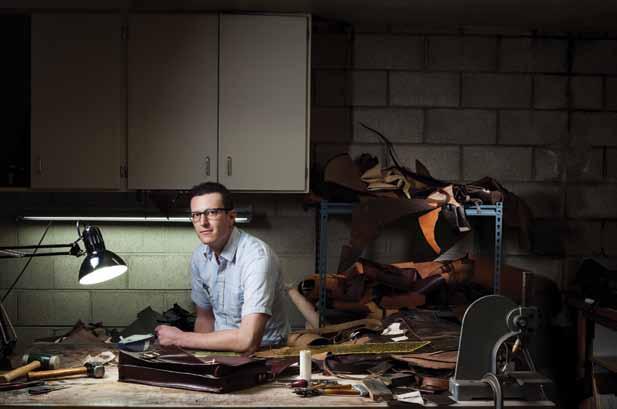

“I’ve seen a few jewelry stores, but I had never experienced anything quite like this. They made all of their jewelry by hand saying it was, ‘Baked fresh daily.’ The amount of concentration and focus that went into each piece was amazing.”

“This was my first portrait for the project and the impressinon I took away was just how enthusisastic he was about helping people. I really didn’t know anything about chiropractic before this shoot but I learned a lot from our conversation.”

“I quickly learned that Rob had a lot of passions—skateboarding, motorcycles, photography—but he was most excited when talking about his screen printing business.”


“My brother came with me to hold the lights and we each climbed to the top of two separate 15-foot stainless steel tanks. It was pretty sketchy up there but well worth the effort.”

“We walked all around downtown until we found this spot on Rose Alley just outside of Assets. We had a blast together and I just can’t get enough of their music.”
“I was actually able to surprise Karl a little bit with this one because the whole time I was setting up he was thinking I was going to shoot the business. When I told him he was the subject, he just sat down and we nailed it on the first try.”

“They are a super new start-up making awesome jeans out of stretchy material and they actually gave me a pair that I wear now whenever I shoot weddings.”
“We sort of went off on a tangent talking about cell phones during the shoot and he talked about how he turns it off at home so he can focus on connecting with his family. It’s great to see him at Farmers’ Market walking around with his kids.”

“I was really encouraged about my own business after getting to know Hillary because she was just so busy; she had lots of clients, lots of work. As we were leaving her studio, which is at her home, we spotted some mountain lions running around outside, I had never seen that before.”

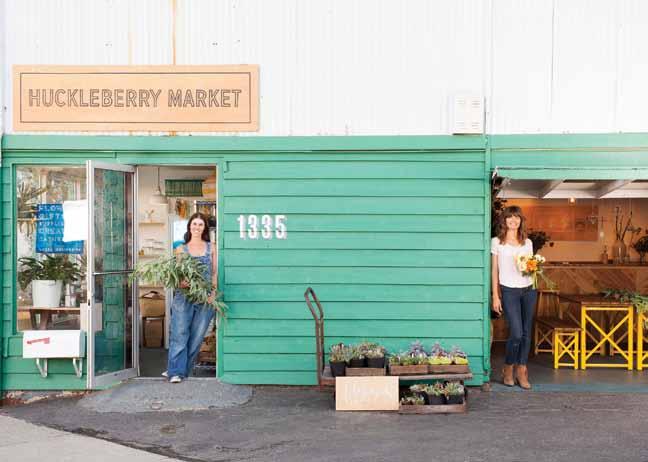
“This was the one shoot that went exactly as planned. Once I saw the building I knew just what I wanted to do. The whole thing only took about 15 minutes, the fastest session by far.”

“She had her two dogs running around the office and I knew this shot wouldn’t be authentic unless we were able to get at least one of them in it.”
“We started off with an hour-long tour of the shop which was just incredible. To see the amount of care and detail that went into the work they were doing really blew my mind.”
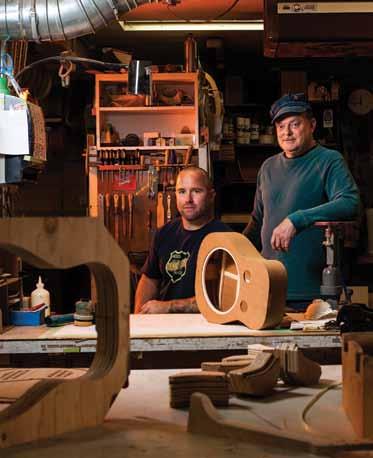
“I was really inspired by Jared and his story. He had been working for another company, I can’t remember which one, and he left to start his own business that he is super passionate about.”
“I knew exactly what I wanted to do with this shoot because I love their bar and had the idea in mind as soon as walked in to have them sit down together in front of it. Fortunately, they went along with me on the plan.”

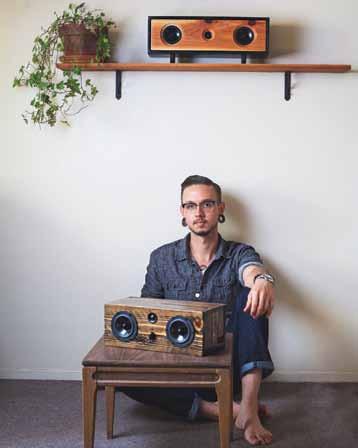
“This was probably the most challenging shoot because I was trying to capture so much. This was a room that Isaac had designed, so I wanted to get it all—the foreground the background, everything. It definitely took some doing, but it worked out.”

Dogeared believes good things happen. The brand is more than a jewelry line and embraces the stories, happy moments, milestones and experiences. Handcrafted in the USA, each piece tells a story of individuality, self-expression, love, and friendship.


$59 // Hands Gallery 777 Higuera Street, San Luis Obispo (805) 543-1921 // handsgallery.com
Artisan John Gray builds furniture out of a small shop in Spokane, Washington producing awesome results. This white oak music stand is entirely handcrafted from hardwoods and stainless steel. The height is adjustable with the floor to ledge of the music panel measuring between 32-51 inches. All woods are oil finished to a satin sheen.

$1,600 // Fiona Bleu Gallery 900 Embarcadero, Morro Bay (805) 772-0541 // fionableugallery.com
Talia Hancock blends Peruvian luxury and tradition with modern lines, reintroducing the allure of a tried and true textile: Pima cotton. Born from a desire for basic pieces with a premium feel, exceptional fit and a touch of functionality, its handcrafted designs are for women who are looking for “anything but basic” basics.

$40 - $65 // Assets
853 Monterey Street, San Luis Obispo (805) 781-0119 // sloassets.com
 BY TOM FRANCISKOVICH
BY TOM FRANCISKOVICH
My neighborhood, a cul-de-sac consisting of seven homes roughly two-and-half miles from Cal Poly, is a microcosm for the housing crisis in San Luis Obispo. “A crisis?” you may ask. Yes, I said it, a crisis. With two-thirds of city housing stock now non-owner occupied, in other words rented, and with more and more long-time residents leaving in search of peace and quiet, it appears that we have reached a tipping point. In the six years we have lived in our neighborhood, we have watched as one house after another converts from family home to Cal Poly student housing. Like dominoes falling, three homes in a row, one whole side of the street is now comprised of student rentals. Our once peaceful little cul-de-sac, now overflowing with cars and traffic, has been visited by police officers responding to noise complaints this school year more times than I can count. We worry a lot about the continuing deterioration of the neighborhood, increasingly asking ourselves, “Is this really where we belong?” At the same time, local business leaders have become more vocal in their rising concern over the lack of affordable housing options for their employees. And, the whole thing has got me thinking…
The State of California mandates that each of its incorporated cities have what has been called a General Plan. The document essentially serves as each municipality’s constitution, or more accurately, its blueprint for the future. The General Plan is required to address seven different components, or “elements,” consisting of land use, circulation, housing, conservation, open space, noise, and safety. Periodically, the various elements require updating to keep up with the times. Such was the case three years ago when the City of San Luis Obispo was awarded a grant and, at that time, also allocated additional monies from its general fund to complete an Environmental Impact Report (EIR) once the update had been adopted. The scope of the update, as determined by the city council, would be limited to just two of the seven elements: land use and circulation. The update, which was completed in October, has come to be known as the LUCE (pronounced “loose”), or the Land Use Circulation Element.
In a country founded in part on extensive liberties as they pertain to property rights, land use rules are a very big deal because they essentially dictate what you can and cannot do with the dirt that you own. And, with less and less dirt available in a place like San Luis Obispo that features so much open, protected space, and with the buildable dirt fetching such huge premiums, you better believe that any change to those policies would ignite equally huge squabbles. In national politics, Social Security is commonly referred to as the “third rail,” as in the electrified rail of a subway system—you touch it, you die. A strong case could be made that land use policy is the “third rail” of San Luis Obispo politics, where emotions run high whenever zoning issues arise. Circulation, on the other
hand, is just a funny word for traffic, but not just automobile traffic. It’s a broad term for everything that moves around, or circulates. That would include cars, bicycles, pedestrians, and public transportation. So, the LUCE will not only dictate zoning and land use within the city limits over the course of the next twenty years, but it will also determine how you will be able to move around that land.
The bucolic cilantro fields sitting west of Highway 101 are Ground Zero for the battle surrounding the LUCE. The long history of the controversial 131 acres begins in the early 1900’s when Ernie Dalidio’s grandparents, Forino and Katie Dalidio, tilled the land, drilled wells, and built a farmhouse. The Dalidios continued to build wells until they eventually had five of them, effectively supplying all of the city’s water up until the end of World War II. The land was passed down to Ernie in 1952, and he continued to farm it. But, in 1991 he realized that farming was never going to pay as much as the development that was happening all around him, so he presented the city council with an idea. Three years later, the proposal had wound its way through the mechanizations of city bureaucracy and it was determined that he could develop half of his land while leaving the other half as open space, effectively blessing the Dalidio Marketplace Initiative. More time passed, and in 2001, with new members elected, the city council did an about-face and voted to deny development of the Dalidio Marketplace. Ernie Dalidio blew a gasket and decided to take

up his case with the county who relinquished their jurisdiction and referred him back to the city. If Dalido was to make a career change from farmer to builder, he was told, it would have to be with the blessing of city voters.
By 2004, the issue had become white hot. The Downtown Association, representing the interests of its members, organized to defeat the plan. Their concern, of course, was that shoppers would head over to the Dalidio Marketplace where prices at the big box stores would be cheap and parking plentiful. After deliberating the pros and cons, citizens weighed in casting a hair over 50% of their votes in opposition to the project. Undeterred, Dalidio tweaked his plan, renamed it the “Dalidio Ranch Project,” and appealed to the County Board of Supervisors. This time the county agreed to oversee the matter by allowing the residents to decide how to handle the development. In the November 2006 election Measure J was approved by 65% of the county and Dalidio had the green light to pave over his dirt.

However, a few months later lawsuits were filed claiming, “Citizens do not have the rights to agricultural decisions through political initiatives.” A year later, February 2008, Judge Rodger Picquet agreed and overturned Measure J stating that the property was within the jurisdiction of San Luis Obispo Airport’s land use area and that the plan interfered with the State Aeronautics Act, which is a set of laws requiring airports to establish safety zones and noise abatement areas in the vicinity of their airfields. The airport commissioners reasoned that an aircraft having problems during takeoff would likely crash land into Ernie Dalidio’s neatly plowed rows. And the concern was not without precedent, as a private plane had fallen out of the sky onto Highway 101 just yards short of the cilantro fields in 1994 killing all four of its occupants. Had the craft made it just a little bit further and had there been homes there, the argument went, things could have been much worse.
“Democratic process trumps the power of all other government agencies” was the rationale of the 2nd Court of Appeals. The Ventura court, who listened to Dalidio’s argument agreed with him by a vote of 3-0 stating on August 4, 2009 that, “Our review of this appeal is also strictly circumscribed by the long-established rule of according extraordinarily broad deference to the electorate’s power to enact laws by initiative. The state constitutional right of initiative or referendum is ‘one of the most
since Ernie Dalidio had depleted his bank account fighting the good fight, it presented Grossman with the defining opportunity of his career and the crown jewel of his burgeoning tract home empire.
Sometime around May 2013, Dalidio and Grossman went back and forth on a price, finally shaking hands at $19.75 million. Not long after the deal landed in escrow, glowing articles about Grossman began popping up in local media casting him as a knight in shining armor coming in to save San Luis Obispo from its housing problem. Advertising for CCB followed close behind the public relations campaign. And it was having an effect, because somewhere along the line the question during conversations concerning development over there on the Dalidio property, now rebranded as “San Luis Ranch,” became not “If,” but “When.”
With solid banking relationships, including reportedly having close ties to an East Coast hedge fund, it does appear that Grossman has the financial support required to develop the 500 homes, 200,000 square feet of commercial space, 150,000 square feet of office space, and a 200-room hotel that his plan outlines. Despite Dalidio’s 25-year battle, there are still some valid questions that remain. First, from the perspective of the airport—particularly in light of the business community’s efforts to bring in larger jets flying more frequently, to provide a direct route to Denver, for instance—is it really a safe place to build 500 homes? What about the engine noise? But, perhaps more fundamentally, is building more homes really the answer to San Luis Obispo’s housing crisis?
precious rights of democratic process.’ These powers are reserved to the people, not granted to them. Thus, it is our duty to ‘jealously guard’ these powers.” It was a Pyrrhic victory for Farmer Dalidio because, as it turns out, all of those lawyers cost a lot of dough, and the whole thing lost steam under a pile of legal bills. For all intents and purposes, without proper capital to support his project, those 133 acres were worth about as much as the cilantro would sell for at Farmers’ Market. Still there was to be another act played out on the Central Coast’s most controversial soil because, as the old proverb remains true today, “One man’s loss is another man’s gain.”
As the Dalidio drama was playing out, there was one person who was likely paying very close attention. Gary Grossman, president of Coastal Community Builders (CCB), a company he had founded in 1988, was busy acquiring one property after another around the Central Coast. He constructed homes as quickly as he could find the land to build on and one neighborhood after another such as Carmel Canyon in Atascadero, Monte Sereno in Arroyo Grande, and the Terraces at Las Ventanas Del Mar in Pismo Beach, began popping up around the county. But, the Holy Grail was not found in those outlying communities, it was in the heart of San Luis Obispo. And
Councilman John Ashbaugh’s pulsating jugular vein was visible from across the crowded chamber. To his right, Councilwoman Carlyn Christianson was whispering something to him, anything to convince him to calm down. She looked like a young mother walking through Trader Joe’s with her out-of-control-tantrumthrowing five-year-old—too embarrassed to call any more attention to the situation, but not sure what to do about it. The subject of Ashbaugh’s ire was as far away from him as possible, both literally and figuratively, on the other end of the dais. Councilman Dan Carpenter had just announced that he would be joining Kathy Smith in voting “No” on the ratification of the LUCE, effectively derailing three years and $1.4 million worth of effort that had culminated with a single vote on that crisp October night. Their “Nays” echoed throughout the hushed room.
Prior to the public meeting, the city council had met privately with the city attorney. At issue was the letter they had received from the California Department of Transportation Division of Aeronautics, who in essence told the councilmembers in some version of bureaucratic legalese, “This is our jurisdiction, if you mess with us we’ll sue your city.” Aside from the cost of becoming bogged down in litigation with >>




Sacramento, there was the very practical reality that if San Luis Obispo moves forward with adopting the LUCE in its current form, it may be taking on significant risk if one of those Denver-bound jets were to ever crash in to San Luis Ranch. According to legal counsel at the county level, overruling the airport on land use matters would absolve San Luis Obispo County of liability in such a case. The liability, instead, could very well be transferred to the city. On a recent flight out of the San Luis Obispo Airport, Carpenter peered out of his window as the plane began its southward ascent and banked to the left. The fuselage twisted in such a way that he was able to look directly down on some open land near Buckley Road—another area designated by the LUCE as residential. “What a place to have a crash,”



If you’re reading this now, it’s already too late [sorry, I couldn’t help myself—I’ve always wanted to write that sentence in a story but have never had the opportunity until now]. At this time, it is likely that the newly elected city council will have ratified the LUCE during their first official meeting in December. Although all of the same legal ramifications will still exist, the Carpenter-Ashbaugh imbroglio did ultimately lead to more citizen engagement as people began to wake up to the idea that the city council may have been throwing out the baby with the bathwater. As it turns out, there is a lot of really good stuff in the LUCE. Things like bike paths, homeless shelters, high-density infill development, and other projects that are tied to securing grants— in other words, if they don’t happen, the grant money doesn’t either. It seems that no stone was left unturned during those three years of deliberation about where we go and what we do over the next 20 years. Unfortunately, in the end, it’s not just the LUCE that will determine our destiny. It turns out that there is another document, replete with small type and hardto-decipher language, currently being crafted at the end of Grand Avenue that will likely have as much, or perhaps more, of an impact on quality of life in San Luis Obispo.
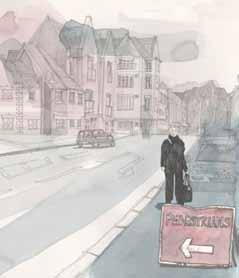
While local policymakers and business executives constantly wring their hands over the subject of “affordable housing,” it is rare that the elephant in the room is acknowledged. With a whopping 67% rental rate within the city limits, San Luis Obispo has become a massive off-campus dormitory for Cal Poly. And, economic forces show that this trend will continue—perhaps more rapidly going forward—if something is not done about it soon. The math is simple. Let’s take a typical 3-bedroom, 2-bath single-family home. In a normal scenario, according to local real estate professionals, this house would rent for somewhere around $2,500. But, rent it to six Cal Poly students who are each willing to pay $700 a piece to share a bedroom, or live in a
converted garage or dining room, and the rent goes to $4,200. When those six students and their six cars move in next door, the quality of life in the neighborhood drops profoundly, and there becomes a tremendous incentive to move somewhere else. If you can rent your house for $4,200, and probably clear somewhere around $1,500 or so after paying the mortgage, and move out to a quiet neighborhood in Arroyo Grande, it appears to be a win-win. Except for your neighbors. For them, it’s a win-lose. Now they are forced into the same predicament, except worse because instead of six students and their six cars, there are now twelve students and twelve cars. The pressure to move to A.G. becomes enormous. Soon they leave, too. Now there are 18 students with 18 cars and the other neighbors move; then the others. Now you have Isla Vista North and the entire city loses.
There is evidence that Cal Poly is tuning into this dynamic. For one, its president, Jeffrey Armstrong, frequently cites studies demonstrating that students fare better academically while living on campus. And with his vow to “focus like a laser beam” on the fouryear graduation rate, it would make sense that building more on-campus housing would fit right in his wheelhouse—if he were a baseball player, building more on-campus housing would be the equivalent of a hanging slider right over the plate. Getting the students back on campus, near all the millions of dollars of resources that exist there for them, all of which have been investments in the name of “student success,” and away from the never-ending game of beer pong with their housemates off-campus, seems like a great place to start. And now is the time to be making those sorts of decisions, because Cal Poly has recently embarked on updating its Master Plan, which is the university’s version of the LUCE. The document will dictate its own land use and circulation over the next 20 years. With a series of steps to reach out to the community, including interactive workshops, Cal Poly has made recent strides toward generating goodwill as it has become much more transparent and









inclusive when it comes to dealing with its neighbors. And they should be applauded for it, because the university could have just as easily clammed up after the Student Housing South Project snafu and the lawsuit that followed, but they have taken a different tack, and it appears that they are beginning to recognize how its success and the city’s success are linked. Isla Vista North does no one any good, except for perhaps the guy living on a quiet Arroyo Grande street collecting exorbitant rent on his house in the old neighborhood back in SLO.
The $64,000 question, however, when it comes to Cal Poly’s Master Plan concerns the size of its student population. In his 2013 Fall Conference address Armstrong emphatically declared that “enrollment growth is essential” and alluded to adding up to 5,000 more students “within the next few years.” What if that number were to become a reality? Let’s assume for a moment that San Luis Ranch does get built, and let’s also assume that Housing South goes up, too. Although there would be another 1,475 beds on campus, that would still leave somewhere around 3,525 kids without a roof overhead. When parents drive down from the Bay Area to help Junior find housing, they realize that competition is fierce and rent is outrageous but they remember seeing a Coastal Community Builder’s billboard on 101 advertising, “Find Yourself at San Luis Ranch.” Mom turns to dad and says, “Honey, why don’t we just buy a home for Junior?” Dad lights up and exclaims, “He

could live there with his five friends, and their rent could pay for his education. We could continue to rent it out when he graduates and it will pay for our retirement— we can actually make money on this whole college thing!” So mom and dad head over to the CCB sales office to enthusiastically write a check for the down payment on a shiny, brand new tract home. With 500 of those homes available on the old Dalidio property, theoretically every single one of them could be stuffed with six Poly students, a total of 3,000 in all. In other words, given the best-case scenario, the additional housing would barely provide coverage for the increase in student population, but it would do nothing for the current shortage. Yes, the Master Plan question concerning the size of future student populations is absolutely critical.
Clearly, San Luis Ranch is not the answer to San Luis Obispo’s housing crisis. The number of homes going up there would barely put a dent in the supply-demand curve. Sure, there are other housing projects slated for the LUCE, but many of them are likely to be snapped up by Cal Poly parents anyway. And, the truth is we really do not know how much of an effect it will have because the most important variable in the equation, the size of future student populations, is not known. Besides, those projects, at least the ones near the airport, if they happen at all, even with the LUCE approved, will likely be many years away and several trips through various courthouses before the first mixer trucks arrive to dump concrete over the cilantro. The fact is that the city cannot build its way out of the housing crisis. The only way to solve this thing is to erect massive amounts of on-campus housing, and quickly. Cal Poly can do this with very little or no money out-of-pocket by engaging in a public-private partnership with a real estate investment trust such as American Campus Communities (ACC), an outfit that does nothing else but create on-campus housing for clients such as UC Irvine. The formula is simple and time-tested: lease some land to ACC for a $1 per year; ACC builds student housing with their own funding and collects the rents; 30 years later Cal Poly buys the buildings back for $1 each. The students live in beautiful, brand new on-campus housing; Armstrong improves his four-year graduation rate; and families move back into the neighborhoods. Housing crisis solved.
So far, during the Master Plan process, Cal Poly, despite its vast land holdings, has remained steadfast in its insistence that “on-campus housing has to be placed close enough to the campus core that students can walk there within 10 minutes.” No progress will be made in this area until that requirement is dropped. There is simply not enough remaining interior space to meet that criterion. Plus, the amount of time it takes now for off-campus students to reach the campus core is much longer. Getting into the car, driving to school, parking the car, walking to class all add up to a lot more than 10 minutes. Taking a look at UC Santa Cruz is instructive, as each of its colleges, which all have separate and unique on-campus housing, are much further apart in nearly all cases than 10 minutes by foot, but they are connected by an elaborate system of bike paths and shuttles that run every five minutes. The other component of the LUCE, circulation, would be greatly affected by an overall reduction in the total number cars in the city. Currently, the population doubles in size each weekday as workers commute in from outlying areas. What if instead of each Cal Poly student contributing another vehicle to traffic congestion, they instead arrived in town with just a bike? What if Cal Poly and the city each provided a series of attractive incentives, perhaps in conjunction with downtown merchants (for example, a “Cyclist Discount Card”), encouraging students to leave the gas-guzzler at home? This is a tremendous opportunity for partnership, and the LUCE contains big improvements for bicycle transportation around town. So, how about striking a deal? In exchange for the expansion of on-campus housing and for meeting a certain vehicle target, the city could arrange for a high-frequency student shuttle service, including late-night trips to the bars downtown. The amount of beautiful, fresh, and juicy low-hanging fruit here is remarkable, but it will take everyone—all of us—working together to figure out how to harvest it.
What are your thoughts on this issue? Write us at info@slolifemagazine.com








What better way to spend an afternoon than with the combination of friends, beer, and a tricked-out bus? That’s where Hop On Beer Tours comes into play—it’s an innovative beer tour company dedicated to experiencing the best beers on the Central Coast.




 BY PADEN HUGHES
BY PADEN HUGHES
Brant Myers, the owner of Hop On Beer Tours, tailored our day from beginning to end with a plan to visit three select breweries in North County. We embarked on our adventure via a customized bus, which can comfortably seat 15 people, and headed out for our four-hour beer tour.
Before entering each brewery, Myers masterfully facilitated education on the beer industry, provided background on each brewery and even included some local folklore. He also made recommendations on seasonal and popular brews.
Each brewery was impressive and featured interesting histories. We started with Firestone Walker Brewery and learned that, as of last year, it was the 16th largest craft brewery in the U.S. This brewery is legendary both in the size of its operation as well as the number of awards it wins each year, including Brew Master of the Year. Their Mocha Merlin was smooth, rich, and one of our favorites. You can also get their popular DBA unfiltered and some incredible anniversary blends.
Our second stop was Barrelhouse Brewing Co., which was founded oneand-a-half-years ago. This brewery was masterfully designed to look and feel like a winery. With a game of cornhole set up, live music played on the bed of a vintage truck, bistro lights draped overhead, and a beautifully
landscaped fountain, this is certainly the most picturesque brewery we visited. Designed to eventually become a large production facility, Barrelhouse is the second largest brewery on the Central Coast. We loved the detail put into the tasting room, which is situated in the brewery itself, giving you a unique view of the production facility. They specialize in seasonal brews and our favorites were their Heidi Banger and Harvest Ale.
Our final destination was Dunbar Brewing, which is the third oldest brewery on the Central Coast. Chris Chambers, the owner, started out by homebrewing in Los Osos, eventually moving to the current location in Santa Margarita. It is a nanobrewery, making small batches one at a time. So when you visit, there will only be one of their beers on tap. And what makes them unique, is that they carry some of the most rare taps in the area. Best known for their English and Scottish beers, connoisseurs from all over love to visit and see what Dunbar has on tap.
When asked what inspired him to start his tour company, Myers explained, “The Central Coast has some of the best breweries and beers, but aside from strong-arming a friend to drive you to the breweries, there really wasn’t a dedicated service established to coordinate beer tours.”
The tour was well-planned, punctual, and provided our group with an incredible experience. As beer tasting continues to grow in popularity and become a tourist attraction locally, it was wonderful to learn and experience it through the eyes of someone as passionate as Myers. This experience is perfect for birthday parties, team building, holiday parties and other celebratory events.
“Graham has been an invaluable partner in our search for a home. We started looking to buy our first house almost two years ago. Despite our slow timeline, Graham patiently guided us through each step of the process. As out-of-town buyers, we asked a lot of Graham, and he always delivered. We have grown to trust him so much, we put an offer down sight-unseen based on his detailed and unbiased assessment of the property. We would highly recommend him.”


Hop On Beer Tours can be reserved for four-hour tours to three breweries with up to 15 people for a total of $449. Additional tour lengths can be accomodated and off-peak discounts apply.

B“I love the beer industry and the strong sense of camaraderie it has. Everyone in the business is a blend of geek and rockstar. You have to embrace the chemistry and science behind brewing, and you also get to show off your artistry like a rockstar. What other line of work can you say that about?”
-Brant Myers


Living a life without setting goals is like sailing a ship without having planned a course: you’re likely to end up somewhere that you wouldn’t want to go.
Most people know intuitively—and research, such as the 2007 study conducted at the Dominican University of California, has proved—that those who write their goals down and stay accountable accomplish significantly more than those who do not.
Working toward goals can give you a sense of purpose, and reaching them

boosts your self-confidence. However, there is one major mistake that many people make: setting unrealistic goals that you cannot possibly attain. Instead of feeling gratified and accomplished, you can end up feeling worse about yourself than before.
How do you know if you have set a goal that you are likely to achieve? One way is to use a technique called SMART.
SPECIFIC A specific goal has a much greater chance of being accomplished than a general goal. To set a specific goal you must answer the six “W” questions: Who is involved? What do I want to accomplish? Where will it occur? When will it take place? Which strategies will I employ? Why do I want to accomplishing the goal?
While a general goal and a specific goal might have the same end in mind, it’s the details that make all the difference, because a specific goal forces you to come up with a strategy for its achievement. For example, to think about a goal in general would be to say, “Get in shape.” But to plan a specific goal would be to say, “Join a health club and workout three days a week.”
MEASURABLE Establish concrete criteria for measuring progress toward the attainment of each goal you set. When you measure your progress you stay on track, reach your target dates, and experience the exhilaration of achievement that spurs you on to the continued effort required to reach your goal.



To determine if your goal is measurable, ask questions such as: How much? How many? How will I know when it is accomplished?
ATTAINABLE When you identify goals that are most important to you, you begin to figure out ways you can make them come true. You develop the attitudes, abilities, skills, and financial capacity to reach them. You begin seeing previously overlooked opportunities to bring yourself closer to the achievement of your goals.
You can attain most any goal you set when you plan your steps wisely and establish a time frame that allows you to carry out those steps. Goals that may have seemed far away and out of reach eventually move closer and become attainable, not because your goals shrink, but because you grow and expand to match them. When you list your goals, you build your self-image. You see yourself as worthy of these goals and develop the traits and personality that allow you to possess them.










TIMELY A goal should be grounded within a time frame. With no deadline tied to it there’s no sense of urgency. If you want to lose 10 lbs, when do you want to lose it by? “Someday,” won’t work. But if you anchor it within a time frame, “by May 1st,” then you’ve set your unconscious mind into motion to begin working on the goal.











Growing up in the Central Valley, carrots grew year-round and as a chef, I always look forward to the fall for butternut squash. The creaminess of the squash and the sweetness of the carrots, to me, is a marriage made in heaven. Chefs always have a go-to meal for their Special Boards and mine is my version of Butternut Squash Soup. The ginger works well with the earthiness of both vegetables. Garnishing it with cilantro oil adds the aromatics and the finishing touch. The sou p is great as a starter or with grilled cheese for a main course. My family loves hearty soups in the cold winter months and the Carrot and Butternut Squash Soup is one of our favorites.
BY JESSIE RIVASJESSIE’S TIP: When making soup, always start with a good stock, whether it is chicken, beef or vegetable stock. Be sure it is fresh and fortified and never salt the stock before adding it to your soup.
roasted garlic cloves
½ tsp onion powder

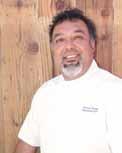
and pepper to taste 1. Peel and cube carrots and butternut squash. Season with turmeric, paprika, salt and pepper. Roast at 350° until fork-tender.
In a blender add carrots, butternut squash, heated chicken stock, roasted garlic, minced ginger and dried onion powder. Purée until smooth and then slowly incorporate the cream until the desired thickness.
INGREDIENTS 1 bunch cilantro
Tbs toasted coriander seed
cup canola oil 1. In a blender add ½ cup oil, cilantro and toasted coriander and blend until smooth.


While the blender is running, slowly add the last ½ cup of oil.
Drizzle oil over individual bowls of soup.
There are some people that have a spark. A special energy that is unexplainable. You know it when you see it. By all accounts, that was the case with Alex Maier, a San Luis Obispo High School student who died tragically following a soccer game. Nearly two years ago, the last week in January of 2013, Maier’s family and friends stood in vigil praying for him to shake off the injuries he sustained from a car accident, just as they had seen him do so often on the playing field. Yet, despite the rallies that took place at the hospital and the high school, #23, the jersey number of the popular 17-year-old senior, would leave those that he knew and loved brokenhearted.
In the days and weeks that followed, one student after another came forward to share stories about Maier. He was not necessarily the top academic student. And it was not just because of athletic ability, but because of his hard work and dedication that the young striker was one of the leading scorers on the varsity team at the time of his passing. He was always appreciated for his attitude and effort, and was known for encouraging others in his quiet way. His motto was, “Choose Happy!” And he lived it—with an infectious smile and with an uncanny ability to take something negative and turn it positive, Maier collected friends without effort. He was a guy you rooted for and wanted to be successful.
As those days and weeks after his passing turned into months, Maier’s family struggled to put the pieces of their lives back together. But his younger sister, Leah, took a page from her brother’s playbook. “Alex would want us to ‘Choose Happy,’” she thought to herself. “But, how can we do that in a way that will honor his memory?” At the time, a new type of race had been coming onto the scene in a big way. “A color run! Yes, that would be perfect!” The Color Run, the first of its kind, was originally conceived of during a 2012 race in Phoenix, Arizona. That race spawned many other off-shoots where the basic concept remained the same: runners make their way through a short course, usually a 5k, and bystanders throw colorful vegetable starch as they pass by. The event has a festival-like quality to it, where the vibe is more about celebration than it is about competition, and entrants dance, jog, and run arm-inarm laughing as they are doused by onlookers.
The idea resonated with Maier’s family and friends and they banded together to launch the race. The first annual race took place a year after

the loss, in January of 2014. In an effort to recast that painful period, and with only a few weeks to assemble the event, the organizers decided to “Choose Happy!,” and scrambled to pull it off in time. Dye was ordered; arrangements were made with San Luis Obispo High School, the event venue; a website went up; insurance was purchased; the course was designed; and volunteers were recruited. It was a massive effort for the small group of renegade organizers that had never before hosted an event. But, people were inspired by Maier and his story—including the fact that he took it upon himself to become an organ donor a year before his passing—and they wanted to help, in any way they could. Dr. Deborah Cherry, Maier’s mother, remembers a conversation with one of her patients. “He told me that he wanted to come out and help. He wanted to be a part of it. And, he was. At 90 years old he was our oldest volunteer.” The outpouring of support from the community continued and 1,500 runners toed the starting line at that first race.
In so many ways, the race was cathartic, a massive expression of “Choose Happy!” as runners and volunteers celebrated with exuberance. Fun was had, and best of all, the race proceeds went toward filling the coffers of the Alex Maier Memorial Scholarship Fund. As the race producers look to build on their success, they share the stories of those who were among the first to receive scholarships—in all, twenty were awarded, all funded in increments between $1,000 and $1,500. The awards didn’t necessarily go to the kids who customarily win scholarships, not just the best and brightest students. The scholarship committee was in search of something else. According to Rosemary Canfield, who had Maier in her 5th and 6th grade classes at Bellevue-Santa Fe near Avila, “It was important to find out what was in the hearts of these kids, so they were asked some non-traditional questions.” She explains, “This year they’re considering asking something along the lines of, ‘Why do you love your mom?,’ for example.” All kinds of creative answers came in, but the applicants that were selected were the ones who demonstrated a caring attitude and a concern for others, as well as showing a bit of a spark—just like #23. SLO LIFE






This three-part evening opens with a heartwarming one-act version of Charles Dickens’ A Christmas Carol. Laugh until your sides ache in a hilarious fractured fairy tale opera and celebrate the season with our Holiday Vaudeville Revue. A Central Coast family tradition designed to bring a year’s worth of smiles to you and your loved ones in one magical evening.

November 20 – December 31 // americanmelodrama.com


Take in the impressive sight of Hearst Castle decorated for Christmas circa the 1920’s and enjoy a special atmosphere that is sure to make the season bright for the whole family. November 29 - December 31 hearstcastle.org



Humorist Jean Shepherd’s memoir of growing up in the Midwest in the 1940’s follows nine-year-old Ralphie Parker in his quest to get a genuine Red Ryder BB gun under the tree for Christmas. December 5-21 // slolittletheatre.org



This 5K route is perfect for runners and walkers of all abilities. Enjoy pancakes with Santa at the Senior Center immediately following the run/walk. Holiday-themed costumes encouraged.

December 6 // slocity.org

It’s Christmas Eve and Clara is about to have the night of her dreams Audiences of all ages will marvel at

Kick off the New Year by jumping into the cold waters of the Pacific Ocean off Cayucos as part of the Carlin Soule Memorial Polar Bear Dip. Festivities begin at 9:30am with the dip at noon.

January 1 // cayucoschamber.com




Mary Lennox, a young orphan, is sent to England to live with her invalid cousin and reclusive Uncle Archibald on his mysterious estate. When Mary discovers a hidden, locked garden her life is changed forever.

January 9 – 25 // slolittletheatre.org

Originally from Uganda, Samité’s smooth vocals—accompanied by the kalimba, marimba, litungu, and various flutes—have mesmerized audiences around the world. In the intimate pavilion, Samité’s East African music will touch everyone as he sings the songs of his people.

January 15 // pacslo.org
Original sketches, monologues, and songs that explore the hilarious, sometimes cringe-worthy moments that take place on sidelines of soccer fields, behind closed doors at parent-teacher conferences, and within our own living rooms.
January 16-25 // slolittletheatre.org
exploration of the music of Johann Sebastian Bach. Events range from chamber music performed on period instruments to the collaborative performance of
January 20 – 24 // bachweek.calpoly.edu



The holiday season is a time to connect with family, share traditions, enjoy treasured recipes, and indulge in creative pastimes like singing, baking, crafting and decorating. It’s a time to celebrate our good fortune. For the civic-minded among us, it’s also a time to consider those less fortunate. And for the nonprofit sector, it’s our busiest time of year, as end-of-year fundraising kicks into high gear. This holiday season, I invite you to seriously consider funding the arts when you spend your philanthropic dollars because the arts transform, enrich, inspire and create community—and they sometimes get short shrift this time of year.
BY BETTINA SWIGGERMost citizens throughout the country appreciate the arts for their intrinsic values—their beauty, vision, and inspiration; their ability to open new horizons and sharpen and challenge our thinking; the way the arts draw together neighbors and diverse cultures. The arts are essential to the proper functioning of our society. They continue to demonstrate their ability to provide categorical evidence of their impact on social issues that concern virtually every facet of American society. And in recent years arts organizations have become more sophisticated in terms of measuring their impact in communities, from school achievement in areas where arts education is prioritized to proving the economic connection between a thriving cultural sector and a diverse, sustainable marketplace.
But despite these achievements, the business of producing and running arts organizations has become more and more difficult, in California especially, and in San Luis Obispo particularly.
There is nothing like attending a live arts event: each production is its very own ecosystem, complete with challenges, opportunities, personalities, and unique messages. There are no reruns in the performing arts. It is fresh and new every time. The price of your ticket is essential for helping us do what we do. Revenue from earned income, like in any business, is our largest source of income. However, it generally accounts for just a little over 50% of our overall income.
The other half comes from contributed support—from government, foundations, corporations and individuals. How does SLO provide government support for the more than 100 arts nonprofits in the county? SLO County provides support for Arts Obispo through its partnership with the California Arts Council and each of the county supervisors regularly allocates funding from their discretionary budgets to support arts activities within their districts. The county granting process for Community Based Organizations, which provides much-needed support for health and human services nonprofit organizations, does not currently support arts organizations. The City of San Luis Obispo provides funding
for arts nonprofits through its Grants in Aid program, a branch of the Promotional Coordinating Committee. But these funds represent a small dollar investment and its guidelines have changed over the past five years to cease providing ongoing support for cultural arts organizations.
And what of our state arts council? California has the dubious honor of hovering around the 47th-to-50th rank in per capita spending for the arts since 2003. Overall the California Arts Council spends $5.6 million a year, but state taxpayers chip in less than 20% of the money. Most of that funding comes from voluntary payments by motorists who spend an extra $50
for special arts-supporter license plates (look for the palm trees – those people support the arts). That means funding comes to 14 cents for each state resident, according to the National Assembly of State Arts Agencies (NASAA)—ranking California behind Texas (15 cents) and Georgia (16 cents). A recent allocation in June of a one-time $5 million gift caused brief celebration, but that money is unlikely to trickle down to our county given the size and scope of the creative economy of the state.
In major metropolitan areas, that gap is filled by corporate giving and foundations, but in San Luis Obispo, we have woefully little institutional funding for the arts. There are no major corporate headquarters with discretionary funds to name buildings, launch endowment campaigns and sponsor events. SLO is a starting place for many entrepreneurs, but they don’t have an example set by larger, more established companies to model the kind of arts funding behavior necessary for a truly sustainable economic future. A few generous family foundations exist, and the Community Foundation re-launched its Art Inspires! granting program two years ago to provide support, but there are very few foundations that specifically fund arts activities in this area.
At Festival Mozaic, we present international artists and attract a national audience, so we are poised to seek funding from leading national charitable foundations. But the prominent foundations in California won’t fund San Luis Obispo organizations because all the major funders in the North think we’re in Southern California, and the big funders in Southern California believe the reverse. And those foundations won’t even bat an eyelash at some of the local arts organizations that imbue our community with so much character and local pride. And while the National Endowment for the Arts does make a point to provide funding for rural and underserved areas, they are rightfully suspicious of proposals that come from organizations that are not funded by the very governments of the communities in which they are based.
In San Luis Obispo, arts organizations depend more heavily on individuals because they (that means YOU) are the people who fund them. So this year:
Support local—buy something from a local artist or craftsperson. Hire a local musician to play at your holiday party.
Take a risk—go to a live performance instead of a movie.
Forget gift cards—give a gift certificate to your favorite arts organization. Make a gift in someone’s name to a nonprofit arts group on behalf of the nonprofit arts organizations who bring joy, meaning, engagement and stimulation to residents and visitors alike. I urge you as citizens to consider the challenges the arts face this holiday season. And now that the election has passed, perhaps we can encourage the City of San Luis Obispo and the county to re-evaluate their current strategies for funding arts organizations to be more inclusive and comprehensive. After all, a community that supports the arts is a healthy, happy community, and San Luis Obispo should consider a truly sustainable investment in the arts and cultural organizations that do so much for our community.
If you would like to have THE LAST WORD email us your 1,000 word opinion to info@slolifemagazine.com

